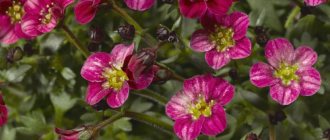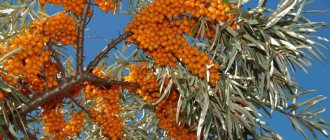Raspberry is a member of the genus Rubus, which, in turn, is part of the Rosaceae family. There are about 120 plant species in total. They vary in shape, size and color.
The list of characteristic qualities, in addition to external attractiveness, includes resistance to low temperatures, excellent taste, the possibility of obtaining a bountiful harvest and simplicity in agricultural technology. Therefore, raspberries have become widespread in various regions of Russia from the middle zone and south, to the Urals and Siberia. Abundant harvests are also observed in the American states and Mexico. Raspberries contain vitamins, antioxidants, fiber, and are used for medicinal purposes. The berry has shades - red, yellow, sometimes black, purple.
Description
The perennial shrub (80 cm-2 m) has a powerful woody root system. The rapid growth of new shoots is due to the growth of adventitious roots. Flower buds appear in the axils in the first year; during the second season, branches appear, on which ovaries and inflorescences subsequently develop.
The fruits ripen in June-July, harvesting is June-August. One bush can produce crops for two decades.
The berries are frozen, they retain their beneficial properties and aroma. Dried ones are used for medicinal purposes.
Remontant raspberry and its other types
The plant comes in four main forms: ordinary, large-fruited, remontant, standard. Main differences:
| View | Description |
| Ordinary |
|
| Large-fruited |
|
| Remontantnaya |
|
| Stambovaya |
|
Popular varieties of remontant, large-fruited and other types of raspberries
Raspberries come in black, yellow, orange and red. Among the main differences are such characteristics as thorns, berry size, and flowering period. Every year, breeders develop new varieties. The list of the most popular varieties includes the following varieties:
| View | Varieties | Characteristic |
| Ordinary (traditional) | Meteor | Early ripening, winter-hardy, high-yielding. Round ruby berries of large size and alluring aroma. The plant is resistant to raspberry mite and fungal diseases. The height of the shoots is 2 m. |
| Lazarevskaya | Early ripening, frost-resistant, resistant to frost and disease. The berries are medium-sized, elongated, have a pronounced taste and weak aroma. Disadvantage: suffers from raspberry mite. | |
| Crane | Mid-season, not cold-resistant, but resistant to diseases and pests. The bush is small and compact. The fruits are quite large for ordinary raspberries, with pronounced taste. Dense, so they tolerate transportation well. | |
| Brigantine | Late-ripening, very large berries of dark red color, have excellent taste. Grows about 1.9 m, with few lateral shoots. Frost-resistant, drought-resistant, practically does not suffer from anthracnose and spider mites. | |
| Large-fruited | Arbat | Bush (up to 2 m). Stable. Fruits (15-18 g), strong, elongated, dark burgundy. They are used both in private gardening and in industry. |
| Maroseyka | The variety is characterized by being thornless, height 1.6 m, has red berries 12 g with a pleasant aroma and juicy pulp. Winter hardiness is moderate. | |
| Eurasia | Early ripening, adapted to different climatic conditions. Productivity – up to 2.5 kg per bush. Resistant to diseases and parasites. | |
| Remontantnaya | Orange miracle | Yellow berries up to 10 g of dessert taste, dense, easily transportable. Fruits all summer. Frost-resistant, resilient. |
| Bryansk miracle | The height of the bush is from 1.6 to 1.8 m. The first harvest is obtained at the end of July. Large berries are distinguished by their elongated conical shape and dessert taste. Resistant to diseases, winter-hardy. | |
| Stambovaya | Tarusa | Does not need support. The fruits are large, bright red (10-13 g), with a good raspberry taste, dense. Moderately resistant, needs cover with snow, dies at -30 °C. |
| Monomakh's hat | Dark crimson berries of sweet taste, similar to a cap (7 g). Fruits from August until frost. Reminds me of a drooping tree. Winter-hardy. | |
| Fairy tale | There is no growth. Productivity – 12 kg per bush. Height 2 m. Large berries with a dense shell. Can winter without shelter. | |
| Penguin | Compressed fruiting, resistance to pests and lack of moisture. Erect, medium-thorny shoots do not exceed 1.5 m. In one season, 5-6 basal shoots are formed. |
New Zealand breeders have come up with a new variety: strawberry spinach - raspberry, where the berries and leaves are eaten. A new product is a rose-leaved variety of raspberries, or Tibetan, unusual in appearance, unpretentious, prickly, and low. Loves the sun and fertile soils.
Black raspberries and their varieties
There are also unusual varieties with black fruits, obtained by crossing raspberries with blackberries:
| Selection | Variety | Characteristic |
| American | Cumberland | Vigorous bushes producing black raspberries. The shoots are curved, thickened, have prickly spines and internodes. Productivity – up to 4 kg per plant. High frost resistance. |
| Boysenberry | Early ripening, high-yielding, thornless. Large, sweet fruits. Winter-hardy, rarely susceptible to diseases and pest attacks. | |
| New Logan | Early ripening variety, no higher than 2 m. Requires shelter. | |
| Russian | Ember | Early, high-yielding. The fruits are small, sweet and sour. |
| Litach | Long shoots with thorns. The berries are small, round, with a bluish bloom. | |
| Gift of Siberia | The berries are not very large and have a dessert taste. The variety has good frost resistance and is recommended for planting even in Siberia. | |
| Luck | Gives a good harvest of small marketable berries. | |
| Turn | High-yielding, early ripening, medium thorniness. Quite large fruits (up to 2 g). Highly resistant. |
Varieties for the Moscow region
Each variety has its own individual characteristics. For the specified region, you should choose varieties that are resistant to low temperatures.
Gardeners most often purchase raspberry seedlings, which can increase the decorative appearance of the site and produce a bountiful harvest. The latter requirement is explained by early frosts.
| Variety | Description |
| Patricia | Productivity – up to 5 kg per bush. Large red berries have an elongated shape. They are consumed fresh and canned. The height of the semi-spreading bush does not exceed 1.7 m. The plant bears fruit from the beginning of July to the end of August. |
| Diamond | The weight of the elongated berries is 7 g. Their features include a characteristic shine and ruby color. There are no problems with transportation. The height of the bush is 1.5 m. Fruiting occurs before the first autumn frosts. |
| Yellow giant | The yellow fruits have a blunt conical shape. Their popularity is due to their sweetness, juicy pulp, and delicate aroma. During the season, from 8 to 12 basal shoots appear. The bushes bear fruit from mid-summer until the first autumn frosts. |
| Firebird | Mid-late, high-yielding. The height of the slightly spreading bush is no more than 1.9 m. The upper half of the shoot is responsible for fruiting. Bright red berries are used to make desserts. Additional advantages include high winter hardiness, resistance to pests and diseases. |
| Polka | Repairable, unpretentious. The berries are scarlet, good for transportation, and have a sweet and sour taste. After defrosting, it does not lose its presentation. |
| Amber Sadko | Orange large sweet fruits ripen in August. |
Interesting information
- Germans are recommended tea with raspberry leaves during pregnancy; they are told this information in childbirth preparation courses.
- In Great Britain, they have been drinking this tea for several centuries, two months before giving birth.
- This tea is an excellent remedy for pain relief from postpartum uterine contractions.
- If a woman has a problem with milk after childbirth, then tea can increase the amount of breast milk. The drink should be drunk at least 3 glasses a day.
Planting raspberries in autumn and spring: when and how to plant
Raspberry is an unpretentious plant. To ensure that efforts are not in vain, it is necessary to pay attention to the quality of seedlings and the step-by-step preparation of the site for planting.
It is better if the soil is loamy. Otherwise, regular application of mineral and organic fertilizers will be required.
Selection of seedlings
The part of the plant intended for planting is selected based on:
- number of shoots (from 2 to 4);
- stem thickness (5-8 mm);
- the condition of the leaf blades (a bright green tint is considered the norm);
- length of the root system (not less than 16 cm).
The latter must be wrapped in a damp cloth during transportation. This is necessary to avoid drying out. If you use plastic bags, the roots may rot.
The sooner the seedling is planted, the better it will take root.
Before planting, its leaves and shoots are cut off. The length of the latter should not exceed 40 cm. Another mandatory point is to dip the roots in a mash made of mullein and clay. With its help, raspberries are rooted.
Boarding time
Raspberries can be planted in spring or autumn. When choosing a suitable period, it is necessary to take into account climatic conditions. Gardeners living in the southern regions most often plant raspberries in the fall (late September - mid-October).
This is due to the development of replacement kidneys. If the seedlings were purchased too late, they need to be protected from the negative effects of low temperature. The storage space becomes a cold room. The temperature in it should not exceed +5 °C. Watering should be avoided.
Spring planting is carried out before sap flow begins. Otherwise, the seedling will take too long to take root. To reduce the duration of this period, the gardener will have to cut the shoots to the buds. This ensures the development of strong shoots.
Landing location
The area for raspberries must meet the following requirements:
- good lighting;
- presence of partial shade;
- light fertile sandy-loamy soil;
- soil acidity level – neutral or slightly acidic;
- protection from strong winds.
If any condition is violated, the yield will decrease significantly.
The most favorable location of the raspberry garden is from north to south.
Do not plant raspberries in low or too high places.
Landing technology
Gardeners use several methods, including:
- Bush. They dig in two directions: from north to south, from northeast to southwest. There should be at least 1.5 m between seedlings. The depth and width of the planting holes should be approximately equal (about 50 cm). Before planting, a mixture of humus, superphosphates, compost, ammonium nitrate and ash is placed in the resulting depressions.
- Trench. This method requires more time and labor. Additional benefits include obtaining a more abundant harvest and providing nutrients. The complex of preparatory measures includes site selection, removal of debris and weeds. To prevent the appearance of the latter, black film and roofing felt are placed between the rows. The depth and width of the finished trench are 50 and 60 cm. The length and number of branches are determined taking into account the size of the raspberry tree.
- Use of containers. Plastic and metal containers must have certain dimensions (width 45 cm, height 60 cm). Before planting, the bottom is removed. Then the resulting structure is placed in a pre-prepared hole. Excessive growth of raspberries is prevented by rotting manure. To increase yield, shrubs are tied up immediately after planting.
Mr. Summer Resident: tips for planting raspberries
Experienced gardeners warn about the following mistakes and give advice:
- Neglecting recommendations regarding the width, depth and length of the recesses is strictly prohibited.
- The use of mineral and organic fertilizers is mandatory. However, mixtures containing nitrogen remain prohibited.
- When determining the spacing between bushes, it is necessary to take into account the type and variety of raspberries.
- The root collar of the seedlings should remain at the level of the previous growing location.
- After planting is completed, the soil must be mulched, compacted and watered. Liquid consumption is from 2.5 to 3.5 buckets per 1 square meter. Water is poured into pre-prepared grooves.
The secret is that if you plant boletus nearby, the raspberry bushes will not get sick.
An excellent site would be the one where garlic, onions, beets, and carrots used to grow. And undesirable predecessors: potatoes, tomatoes.
Rules for planting remontant raspberries
These raspberry varieties are capable of producing several harvests. The shoots can be biennial or annual. Difficulties in care usually do not arise, which cannot be said about the process of reproduction. When planting, the row spacing is usually 1.5 m, the gaps between seedlings are 70 cm. It is necessary that the root neck of the seedling is located at the same depth as before transplanting and the root system is not close to the surface.
Remontant raspberries are planted in spring or early autumn.
Without pruning, raspberries will become less productive.
Raspberry care
When growing shrubs, it is necessary to drain, moisten and loosen the soil. Regular feeding is also considered mandatory. All procedures must be carried out with caution. Otherwise, damage to parts of the root system that is located not far from the soil surface cannot be avoided. Peat and straw are used to mulch the soil.
When autumn comes, all the leaves on the bushes are removed and the mulch is burned.
Fertilizers, watering
To increase productivity, ready-made compost (10 kg), wood ash (150 g) is used from organic matter, potassium salt (40 g), superphosphate (60 g), ammonium nitrate (30 g) per 1 square meter are used from minerals. For dense soils, it is mixed with peat to add looseness.
Experts recommend using sprinklers to achieve a rain effect. Special control over soil moisture is required during the growing season. It lasts throughout the spring and several summer months. Raspberries are watered at the root. The liquid should not get on the leaves. This may cause burns.
Raspberry pruning
In the fall, fruit-bearing shoots that are two years old are cut off and no stumps are left. Thanks to this, new shoots appear in the bush in the spring.
In spring, stems damaged by frost are shortened. In summer, excess young growth is removed. This prevents thickening of the bush.
The Sobolev method is widespread: from May to June, the tops are shortened, leaving branches one meter long. The next year, in early spring, the side shoots are shortened by 5-12 cm. It is believed that this leads to an increase in yield and a decrease in diseases, subject to proper planting and care.
The plant, whose age ranges from 5 to 7 years, is rejuvenated. They do this in the fall. The old root is removed. Young seedlings are transplanted.
Preparing raspberries for winter, garter
To prevent damage to plants, install supports. To do this, you can use the following methods:
- fan - two sticks to which parts of the shoots are tied;
- stake - shoots are fixed at a height of 1.5 m;
- trellis - to strengthen the future bush, different structures made of posts and wire are used (varieties: single, double, Scandinavian, movable turnstile).
Protection from hypothermia is required for varieties that are not frost-resistant. Use a fence, frame with film, or polycarbonate structure.
Summer pruning of raspberries
At the beginning of summer, when the bush is actively growing, it is necessary to carry out repeated, already summer, pruning of the raspberries.
Since this crop is characterized by increased shoot formation, the plantings quickly thicken, are poorly ventilated and unevenly illuminated by sunlight, which is a provoking factor for the development of diseases and damage by insect pests. To avoid this, it is necessary to remove excess root growth.
Before pruning your raspberries, it is recommended to select a few strong shoots to leave for propagation.
In the summer, sanitary pruning is carried out, removing all dried, diseased and suspicious branches. All plant material is burned.
How and when to replant raspberries
The time of transplantation depends on several factors: an adult bush or young shoots, climatic conditions, varietal affiliation. In the spring, plants with well-developed roots are planted, and for mild climates, root shoots of raspberry varieties of remontant varieties are planted. In the middle zone, it is better to replant young shoots at the end of summer or autumn. They do this in the same way as planting seedlings.
Transplanting young bushes to the growth sites of old ones is not allowed. Preparation involves digging up the soil and applying fertilizer.
Spring pruning of raspberries
It is impossible to say the exact time when you need to prune raspberries for the first time. It all depends on the local climate. You should visit the raspberry garden in order to restore order in early spring, as soon as the snow melts and it is possible to approach the plantings.
The bush is carefully inspected, branches that could not withstand the frost, dead, broken and dried branches are removed. Frostbitten stems are pruned to the first swollen living bud. Then the excess shoots are cut out, choosing the weakest ones, on the basis that no more than 8-10 strong and healthy branches should remain in the bush. The remaining stems are shortened to a height of approximately 150-180 cm.
Some gardeners practice multi-level pruning in order to increase the duration of the berry picking period, dividing all plants into 3 groups:
- first level - only the tops are shortened (by about 15-20 cm);
- second level - the stems are cut to half their height;
- third level - cut the shoots short, leaving no more than 20-25 cm.
The first, earliest berries will ripen on high branches, and a little later those shortened in half will bear fruit. The harvest on short-cut stems will ripen later than everyone else.
Reproduction
There are two ways to get a new plant:
- Vegetative - shoots separated from the root are planted again in early autumn. This method is considered more effective.
- Using seeds - requires effort and material costs. Planting material must be purchased in specialized stores. In this case, seedlings and seeds will have all varietal characteristics. Having selected high-quality seeds, they are soaked, sown in a mixture of peat and sand to a depth of about 5 mm, and when two normal leaves appear, they are planted. In autumn they are transplanted into the garden.
For removal, the shoot is bent to the ground, after cutting off the leaves. Cover with soil, strengthen, tie up the top, and water regularly.
Leaf storage
How to preserve the usefulness of raspberry leaves? Proper storage! It is best to purchase special fabric bags that can be tightly closed. Fabric can be replaced with paper.
It is better to store such bags in a cool, dark place. Away from moisture. Raspberry leaves will be stored for about two years, but within a year you will have used up all the leaves.
Diseases and pests
Prevention becomes the main condition for combating various diseases and parasites.
The affected parts of the plant are cut off and burned. The last stage is not recommended to be carried out in the garden plot.
| Disease/Pest | Damage | Corrective measures |
| Anthracnose | Single white-gray spots, wilted leaf blades. | Spraying with urea before the buds open; for prevention, you can use nitrophen, Bordeaux mixture. Problems can be avoided by thinning the plantings. |
| Didimella (purple spot) | Noticeable destruction of stems, drying out of plants, appearance of purple spots. | |
| Septoria (white spot) | Damage to stems and leaves, whitish spots near the buds. | |
| Rust | Small orange dots on shoots. They most often occur in the spring. | Remove affected leaves. To prevent an epidemic, raspberries are regularly inspected. The most effective measure is thinning. Treatment is carried out using garlic infusion and sulfur preparations. |
| Medvedka | Damage to the roots at the neck, detection of oval yellowish-gray eggs. | To prevent the problem, make thermal baits (pits with manure and fresh humus). They are also created using match heads. |
| Chafer | Damage to stems and rhizomes, drying of plants. | The beetles are collected and destroyed. They use a clay mash that contains tobacco dust. |
| Aphid | Deformation of root shoots, twisting of leaf blades. Weakened immune system and slowed growth. | Spray with an infusion of tobacco dust and soap. |
| Stem fly | Damage to new stems, eggs in the axils of leaves, rotting of the tops. | The affected parts are removed and treated with karbofos emulsion. Specific medications are often used (Decis, Iskra). |
Application
In cooking
Raspberries are often used to prepare compotes and jelly, jams and preserves, marmalade and marshmallows, as a filling for all kinds of baked goods, and as a filler for desserts. Raspberry sauces are also great for meat dishes, and incredibly aromatic raspberry vinegar can be used to dress salads. In addition, raspberries are an excellent base for making all kinds of alcoholic drinks - liqueurs, tinctures, liqueurs, vodkas.
In medicine
In scientific medicine, a very insignificant part of the medicinal potential of raspberries is used - raspberry syrup is a sweetener in a number of mixtures, and compounds obtained as a result of the biosynthesis of salicylic acid are used in ointments and powders to treat skin diseases. But in folk medicine there are a huge number of recipes using all parts of the plant.
- For diseases of the respiratory tract, raspberries are used as an antipyretic, diaphoretic and expectorant. Raspberry tea, raw berries, and a drink brewed from raspberry shoots are beneficial.
- For diarrhea and dysentery, a decoction of raspberry branches, an infusion of leaves and branches, and tea of dried berries are recommended.
- For skin diseases and acne, use an infusion of raspberry flowers or leaves, an ointment prepared from the juice of the leaves of the plant, as well as an infusion of the leaves in olive oil.
- For vascular diseases and blood problems, a decoction of the roots or flowers of the plant is useful. For hemorrhages, use a decoction of the leaves.
- For problems with reproductive function (infertility in women, sexual weakness in men), raspberries are included in medicinal preparations as the main component.
- Chinese medicine recommends raspberries for eye diseases, toothaches, to improve digestion and as a hemostatic agent.
- Tibetan healers use the leaves and young shoots of the bush to treat some chronic infectious diseases, neurasthenia, and lung diseases.
- In Transcaucasia, recipes with raspberries are used to neutralize the effect of poison from the bites of poisonous insects.
When losing weight
The caloric content of raspberries at the level of 40-50 kcal allows them to be classified as low-calorie products. Therefore, the berries are widely used in all kinds of diets, as well as in the bakery industry - adding dried raspberry powder to the dough reduces its energy value.
In cosmetology
- Raspberries have a great effect on skin condition. Therefore, it is part of special anti-aging diets.
- Raspberry leaves are used to combat acne.
- A lotion is prepared from the berries to nourish and cleanse the skin.
- Recently, raspberry ketone (sold in the form of crystalline powder) has been in great demand, increasing skin tone, eliminating sagging, strengthening hair and promoting hair growth.











